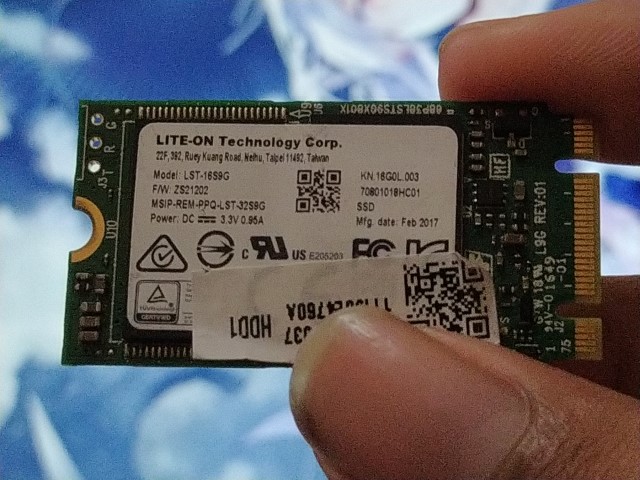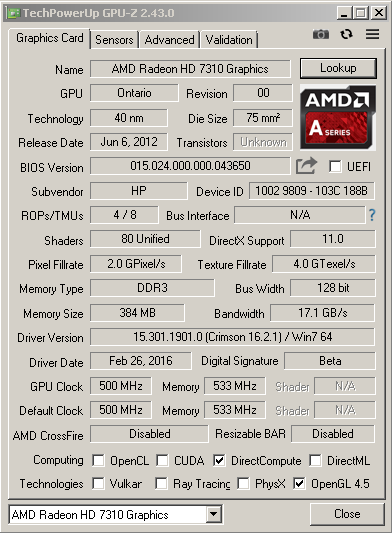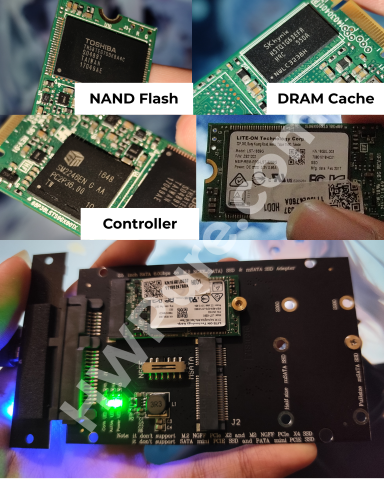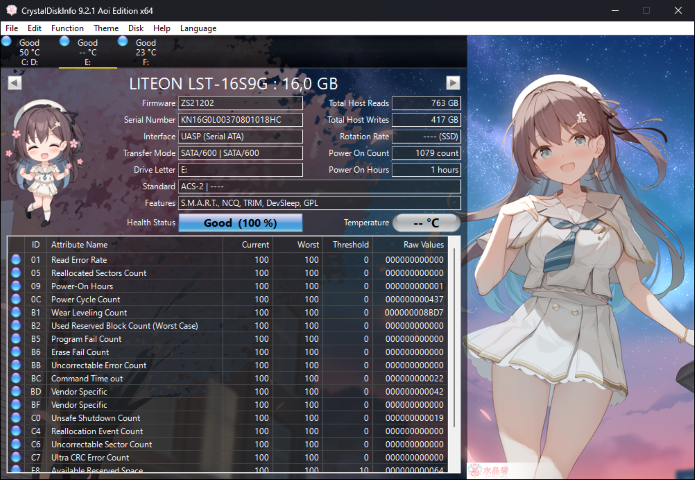Comparing: AMD Radeon HD 7310 IGPU VRAM Disk vs LITE-ON LST-16S9G 16GB
In this comparison, we analyze two Disks: AMD Radeon HD 7310 IGPU VRAM Disk and LITE-ON LST-16S9G 16GB, using synthetic benchmark tests to evaluate their overall performance. This side-by-side comparison helps users understand which hardware delivers better value, speed, and efficiency based on standardized testing. Whether you're building a new system or upgrading an existing one, this benchmark-driven evaluation offers valuable insights to guide your decision.

AMD Radeon HD 7310 IGPU VRAM Disk
| Type: | Disks |
|---|---|
| Model: | Radeon HD 7310 IGPU VRAM Disk |
| Capacity: | 128MB |
| Interface: | DDR3 |

LITE-ON LST-16S9G 16GB
| Type: | Disks |
|---|---|
| Model: | LITE-ON LST-16S9G 16GB |
| Capacity: | 16GB |
| Interface: | SATA-III 6Gbps |
Specification Comparison Table
This specification comparison presents technical details of several devices or components to help you understand the key differences between each option. Use this table as a reference to determine which device best suits your needs.
| Specification | AMD Radeon HD 7310 IGPU VRAM Disk | LITE-ON LST-16S9G 16GB |
|---|---|---|
| Brand | - | LITE-ON |
| Format | VRAM Disk | SSD M.2 SATA 2242 |
| Capacity | 128MB | 16GB |
| Interface | DDR3 | SATA-III 6Gbps |
Submission Comparison Table
This submission comparison table displays the number and details of benchmark data submissions from various devices or components. This information helps you understand the performance based on the benchmarks that have been tested, as well as providing an overview of the consistency and popularity of the available benchmark results.
| No. | Benchmark Software | AMD Radeon HD 7310 IGPU VRAM Disk | LITE-ON LST-16S9G 16GB |
|---|---|---|---|
| 1 | CrystalDiskMark |
Read: 393.23 MB/s Write: 393.66 MB/s |
Read: 280.45 MB/s Write: 45.40 MB/s |
Submission Comparison Chart
This chart visualizes the benchmark scores comparison between two hardware devices based on submitted data.
Media Gallery
A collection of photos of tested hardware. These images can help you identify the physical form, model, and variant of the hardware in question. These photos are from our own documentation, and if they are not available we may not be able to document them.
About Hardware AMD Radeon HD 7310 IGPU VRAM Disk
The AMD Radeon HD 7310 is an integrated GPU (iGPU) based on the Terascale 2 architecture embedded in some early generation E1 series APUs, such as the AMD E1-1200. With 80 Stream Processors, this GPU is designed for light tasks such as video playback, basic computing, and casual gaming with low graphics settings. Despite being an entry-level GPU and being quite old, the Radeon HD 7310 is still able to operate well for basic needs and certain technical experiments.
In this test using an HP 1000 1b05au device paired with an AMD E1-1200 processor, 4GB DDR3 RAM, and Windows 7 operating system, an interesting experiment was conducted by converting part of the VRAM allocation into a VRAMDisk using specialized GPU RAM Drive software.
VRAMDisk is a method that utilizes VRAM capacity as high-speed temporary storage, just like RAMDisk but with graphics memory. In this configuration, of the total VRAM of 384MB (plus shared memory), about 128MB was set aside to be used as a VRAMDisk. Despite the small capacity, the read and write speeds were quite surprising:
- CrystalDiskMark:
- Read: 393.23 MB/s
- Write: 393.66 MB/s
This figure shows that even using an older generation GPU with DDR3 memory and a 128-bit interface, the VRAM still has enough bandwidth for light cache tasks or fast storage experiments. This technology is not intended for daily use, but it can be an interesting alternative for technical purposes, testing, or short-term local access speeds of small files.
Given its limitations-both in terms of VRAM capacity, iGPU performance, and modern driver support-the AMD Radeon HD 7310 is definitely not an option for gaming or heavy workloads right now. However, experiments like this VRAMDisk show that legacy devices can still be creatively utilized in certain contexts, especially in resource-constrained environments.
Device test (testbed) :
Device: HP 1000 1b05au
Software: GPU Ram Drive
CPU: AMD E1-1200
GPU: AMD Radeon HD 7310 (Integrated)
RAM: 4GB DDR3 Single Channel 2 DIMM 1066MHz
OS: Windows 7
Wednesday, 26 December 2012 14:27:32 | Update: 3 weeks ago
About Hardware LITE-ON LST-16S9G 16GB
The LITE-ON LST-16S9G 16GB M.2 SATA is a compact solid-state drive designed to meet the storage needs of devices with limited space, such as mini PCs, older laptops, or embedded systems. With an M.2 2242 form factor and a SATA III 6Gbps interface, this SSD delivers sufficient performance for basic needs, particularly as a boot drive or operating system medium. Despite its 16GB capacity, its internal components are of decent quality for an entry-level class.
This SSD uses the TOSHIBA TH58TEG7DDK8A4C NAND flash chip, known for its durability and stability, combined with SK hynix's DRAM cache (H5TQ1G63EFR) featuring 1GB DDR3 SDRAM specifications—a rare find in SSDs of its class. The use of the Silicon Motion SM2246EN controller adds further value, as it is widely recognized in the SSD world as a reliable and efficient controller for handling light to moderate read/write tasks. This combination makes the LITE-ON LST-16S9G sufficiently capable for tasks such as booting, running a lightweight OS, or storing system configurations.
Performance testing was conducted on a Lenovo IdeaPad Slim 3i 14ITL6 device with 12GB DDR4 dual-channel RAM and the Windows 11 22H2 operating system. The SSD was installed via an M.2 SATA-to-SATA adapter and connected via a USB 3.0 enclosure. Test results showed sequential read speeds of 280MB/s and write speeds of 45MB/s on the CrystalDiskMark benchmark, while AS SSD recorded read speeds of 279MB/s and write speeds of approximately 41.67MB/s. This performance is stable and consistent with the characteristics of a SATA SSD in the low-capacity class, although the write speed is relatively slow for large file transfers.
Despite its limitations, such as limited storage capacity and low write speeds, the LITE-ON LST-16S9G remains an attractive option for users needing a small SSD for specific purposes. It is suitable for use in lightweight operating systems like Linux, custom devices like routers or media players, and as an upgrade solution from an HDD in older systems that only require improved boot speeds and basic application responsiveness. With its generally affordable price and high-quality internal components, this SSD can be a cost-effective yet functional alternative in the world of digital storage.
Device Test (testbed) :
Adapter: M.2 SATA to SATA -> SATA to USB 3.0 (HDD Enclosure)
Device: Lenovo IdeaPad Slim 3i 14ITL6
CPU: i5-1135G7
RAM: 12GB DDR4 3200MHz Dual Channel (8+4)
OS: Windows 11 22H2
* I have tested this hardware in used condition, so its performance may have deteriorated.
Monday, 30 June 2025 20:45:05 | Update: 2 weeks ago



